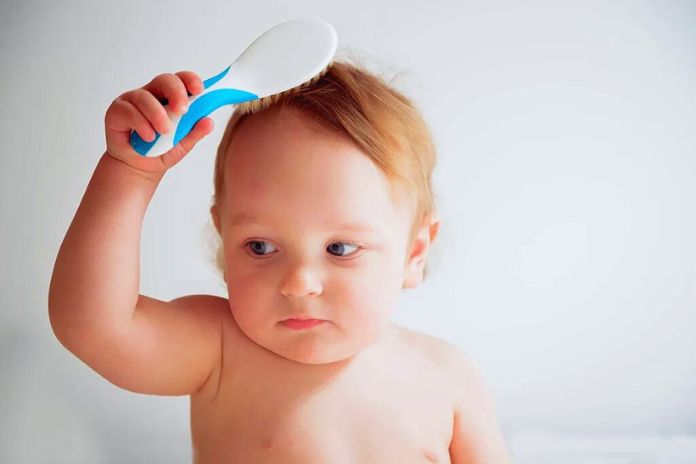How does newborn hair grow? Why are some children already born with thick hair and other children not? How to wash your hair in the best way? Let’s find out everything there is to know on the topic.
Hair Growth In Newborns: What Is It Influenced By?
As soon as you become a parent, many doubts and questions crowd your mind, starting with a topic as simple as it is curious: newborn hair. Why, for example, are some children already born with thick hair and others are not? Both situations fall within the norm, and therefore, a child who comes into the world almost bald (or in any case with little hair) and one with a lot of hair are perfectly healthy.
However, what influences this aspect is a mix of genetic reasons, hormones to which the fetus would have been exposed inside the womb and skin color. Another exciting aspect is that the hair a baby is born with will fall out naturally within a few months. Only very few children maintain them up to one or two years of life, while the majority “change” them due to the hormonal changes that occur in their organism during the first months of life.
During pregnancy, the level of maternal hormones in the fetus’s body is high. However, it drops sharply after birth so that thinning hair may appear in the first few weeks. This loss, also called neonatal alopecia, is an entirely normal phenomenon and can also be present in new mothers ( telogen effluvium ), again due to the sudden lowering of hormones in the body.
Neonatal alopecia is a physiological condition and should not cause too much concern; however, if skin rashes, redness, itching, fever, weight loss or bleeding of the scalp also appear, then you will need to contact your pediatrician.
What Does The Color Of Newborn Hair Depend On?
Even the color of a newborn’s hair is not fixed and immutable, but in many cases, it tends to change as time passes. This is why it is not uncommon for blind children to take on reddish shades or for black children to become brown. The shade of the hair depends, in fact, on the amount of melanin present in our body, which in turn is influenced by certain hormones that act during pregnancy, including estrogen.
Almost certainly, however, children who are born with black or brown hair will continue to have dark hair, while those who have light hair may maintain it over time or darken it slightly. Mainly is the case of red hair, which generally appears when one of the two parents has hair of this color.
In reality, this is not a fixed rule and a child who does not have red parents may be born with this shade. This is due to the presence in the fetus of a high level of pheomelanin associated with a low amount of melanin. However, it is still necessary for the parents to be carriers of the recessive MC1R gene.
How To Wash A Baby’s Hair
New parents often don’t know how to care for a newborn with particularly thin or fragile hair, and they fear ruining it by using products that are too aggressive on the scalp. In general, newborns’ hair is washed precisely like that of adults, i.e. wetting the head with water and rubbing it very delicately with a specific detergent or with just water.
Although there are no particular rules regarding frequency, it is possible to wash your hair two or three times a week. To dry them, pat the head, being careful not to apply too much pressure and then use the hairdryer if the child already has relatively thick hair. However, it is better not to hold the hair dryer very close to your head and not to overdo it with heat.
Cradle cap, however, present in the first weeks of the baby’s life, can be softened with a cotton pad soaked in a little almond oil before bathing. This procedure, which can be done daily, dissolves excess sebum. However, be careful to remove the scales only with a comb with soft tips, avoiding removing them with your nails, or the risk that dangerous inflammation or scars will be created.
Cradle Cap In The Newborn
There are many newborns with delicate hair and cradle caps. This condition is caused by the hormonal fluctuations that occur after birth and by the excessive activity of the sebaceous glands. Generally, this form of seborrheic dermatitis tends to disappear during the first weeks of life and is not accompanied by other particular symptoms. However, if the cradle cap does not resolve spontaneously, or if, in addition to this disorder, fever, dysentery, crusts in other parts of the body, or vomiting also appear, then it will be necessary to contact your pediatrician.
Read Also: My Baby Has Phlegm: What Should I Do?
